Government Monarchy Early 10th century Almish Yiltawar | ||
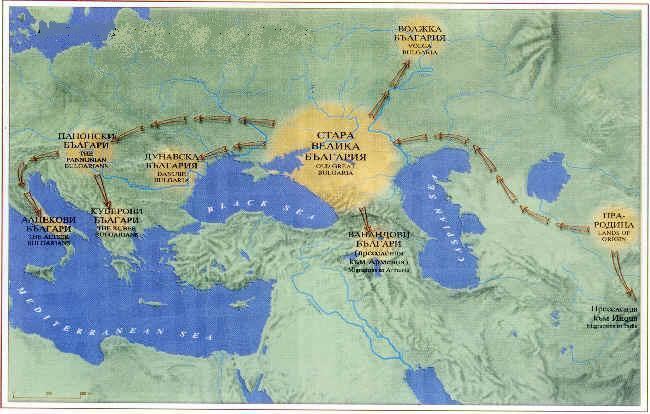 | ||
Similar Kara Khanid Khanate, Golden Horde, Cumania | ||
Anthem of volga bulgaria
Volga Bulgaria (Tatar: Идел буе Болгар дәүләте İdel buyı Bolğar däwläte, Chuvash: Атӑлҫи Пӑлхар Atălči Pălhar) or Volga–Kama Bulghar was a historic Bulgar state that existed between the seventh and thirteenth centuries around the confluence of the Volga and Kama rivers, in what is now European Russia.
Contents
- Anthem of volga bulgaria
- Bulgars from danube and volga bulgaria
- Origin and creation of the state
- Conversion to Islam and further Statehood
- Decline
- Demographics
- References
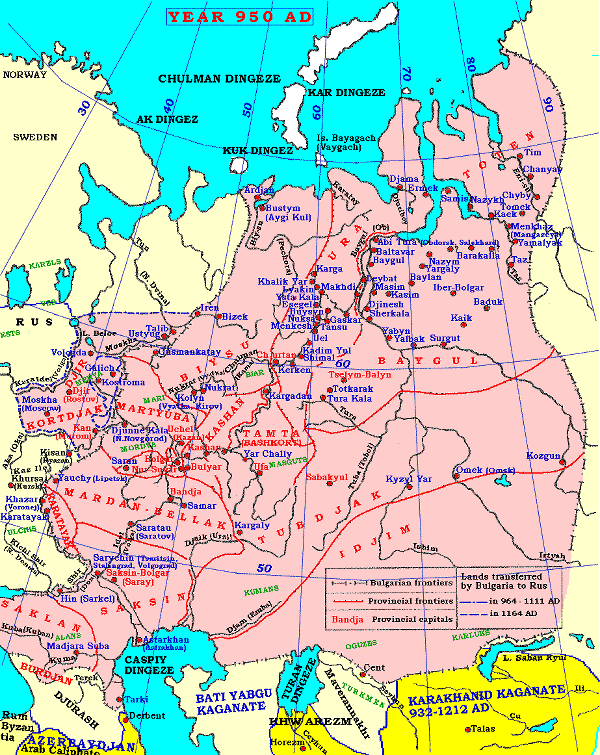
Bulgars from danube and volga bulgaria
Origin and creation of the state
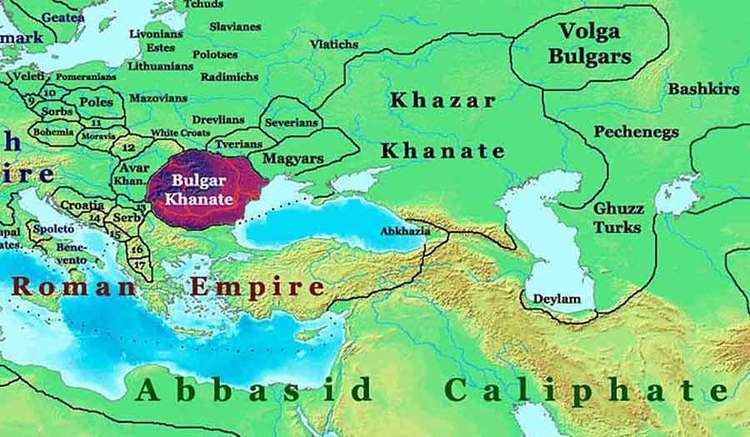
Information from first-hand sources on Volga Bulgaria is rather sparse. As no authentic Bulgar records have survived, most of our information comes from contemporary Arabic, Persian, Indian or Russian sources. Some information is provided by excavations.
It is thought that the territory of Volga Bulgaria was originally settled by Finno-Ugric peoples, including Mari people.
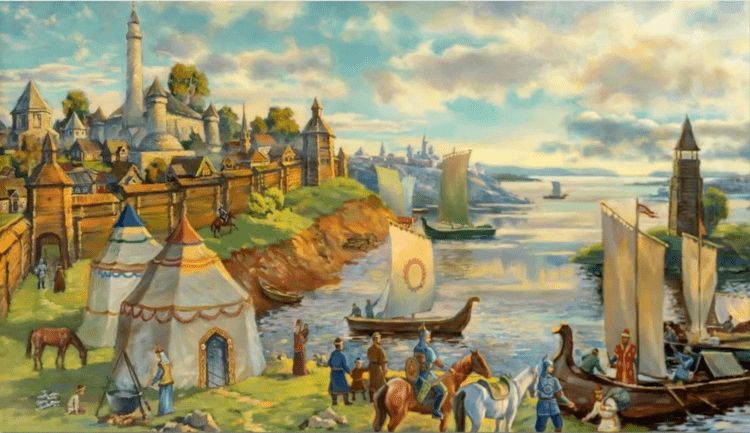
The Bulgars of Kubrat's son and appointed heir Batbayan Bezmer moved from the Azov region in about AD 660, commanded by the Kazarig Khagan Kotrag to whom he had surrendered. They reached Idel-Ural in the eighth century, where they became the dominant population at the end of the 9th century, uniting other tribes of different origin which lived in the area. Some Bulgar tribes, however, continued westward and eventually settled along the Danube River, in what is now known as Bulgaria proper, where they created a confederation with the Slavs, adopting a South Slavic language and the Eastern Orthodox faith.
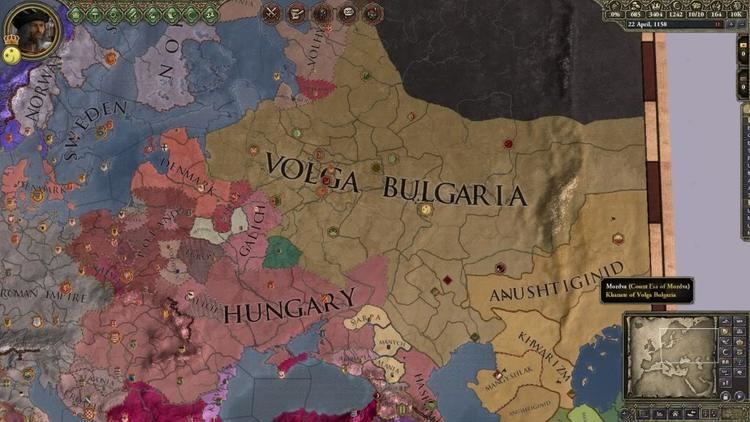
Most scholars agree that the Volga Bulgars were subject to the Khazarian Empire until the mid 10th century, when the Bulgars no longer paid tribute to them. Threat from Khazaria was completely gone after Khazaria's destruction and conquest by Sviatoslav in the late 10th century, after which Volga Bulgaria grew greatly in size and power. Sometime in the late 9th century unification processes started, and the capital was established at Bolghar (also spelled Bulgar) city, 160 km south from modern Kazan. Most scholars doubt, however, that the state could assert independence from the Khazars until the Khazars were annihilated by Svyatoslav of Rus in 965.
Abu al-Ghazi Bahadur named the Volga-Bulgar people as Ulak.
Conversion to Islam and further Statehood
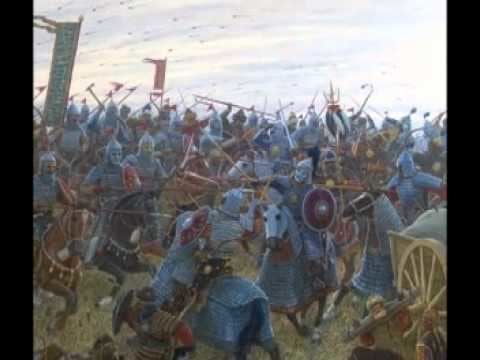
Volga Bulgaria adopted Islam in 922 - 66 years before Russia became Christian. In 921 Almış sent an ambassador to the Caliph requesting religious instruction. Next year an embassy returned with Ibn Fadlan as secretary. A significant number of Muslims already lived in the country.
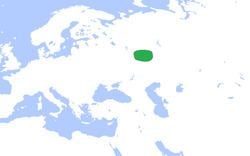
The Bulgarians attempted to convert Vladimir I of Kiev to Islam; however Vladimir rejected the notion of Rus' giving up wine, which he declared was the "very joy of their lives".
Commanding the Volga River in its middle course, the state controlled much of trade between Europe and Asia prior to the Crusades (which made other trade routes practicable). The capital, Bolghar, was a thriving city, rivalling in size and wealth with the greatest centres of the Islamic world. Trade partners of Bolghar included from Vikings, Bjarmland, Yugra and Nenets in the north to Baghdad and Constantinople in the south, from Western Europe to China in the East. Other major cities included Bilär, Suar (Suwar), Qaşan (Kashan) and Cükätaw (Juketau). Modern cities Kazan and Yelabuga were founded as Volga Bulgaria's border fortresses. Some of the Volga Bulgarian cities still have not been found, but they are mentioned in old East Slavic sources. They are: Ashli (Oshel), Tuxçin (Tukhchin), İbrahim (Bryakhimov), Taw İle. Some of them were ruined during and after the Golden Horde invasion.
The Rus' principalities to the west posed the only tangible military threat. In the 11th century, the country was devastated by several raids by other Rus'. Then, at the turn of the 12th and 13th centuries, the rulers of Vladimir (notably Andrew the Pious and Vsevolod III), anxious to defend their eastern border, systematically pillaged Bulgarian cities. Under Russian pressure from the west, the Bulgars had to move their capital from Bolghar to Bilär.
Decline
In September 1223 near Samara an advance guard of Genghis Khan's army under command of Uran, son of Subutai Bahadur, entered Volga Bulgaria but was defeated in the Battle of Samara Bend. In 1236, the Mongols returned and in five years had subjugated the whole country, which at that time was suffering from internal war. Henceforth Volga Bulgaria became a part of the Ulus Jochi, later known as the Golden Horde. It was divided into several principalities; each of them became a vassal of the Golden Horde and received some autonomy. By the 1430s, the Khanate of Kazan was established as the most important of these principalities.
Demographics
A large part of the region's population included Turkic groups such as Sabirs, Barsil, Bilars, Baranjars, and part of the possibly Iranian Burtas (by ibn Rustah). Modern Chuvashes descend from Sabirs and Kazan Tatars descend from the Volga Bulgars. Another part comprised Finnic and Magyar (Asagel and Pascatir) tribes, from which Bisermäns probably descend. Ibn Fadlan refers to Volga Bulgaria as Saqaliba which is a general Arabic term for Slavic people. Other researches tie the term to the ethnic name Scythian (or Saka in Persian).
According to some historians, over 80% of the country's population was killed during the invasion. The remaining population mostly relocated to the northern areas (territories of modern Chuvashia and Tatarstan). Some autonomous duchies appeared in those areas. The steppe areas of Volga Bulgaria may have been settled by nomadic Kipchaks and Mongols, and the agricultural development suffered a severe decline.
Over time, the cities of Volga Bulgaria were rebuilt and became trade and craft centers of the Golden Horde. Some Bulgarians, primarily masters and craftsmen, were forcibly moved to Sarai and other southern cities of the Golden Horde. Volga Bulgaria remained a center of agriculture and handicraft.
